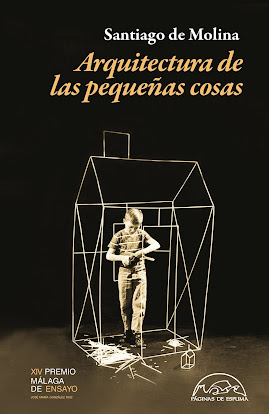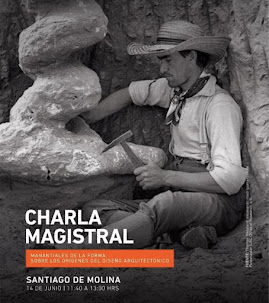Entre todas, la metamorfosis de la cocina ha sido la más silenciosa y profunda de la casa. Las cocinas de humo y vapores, las que nutrían nuestra cotidianidad con olores de hogar y promesas de sustento, han encontrado refugio en la comida prefabricada y en las “dark kitchens”. La venta de pizza congelada es un negocio milmillonario que no hace más que crecer en todo el mundo. La comida mediterránea, asiática, las hamburguesas gourmet y los sándwiches que llegan a la mesa a lomos de ciclistas en cajas térmicas se preparan en el mismo local y por los mismos cocineros. Sin ventanas, comensales, ni escaparates las cocinas fantasmas son tecnificados puntos de logística que operan fuera de la vista. A la vez, los restaurantes han convertido la alta cocina en un espectáculo al que es imposible sustraerse. Las estrellas michelín ultravisibilizan sus realizaciones. El kimchi y el alginato sódico invaden las redes sociales y los estantes del supermercado. La web del restaurante de lujo promete una experiencia culinaria a la que hay que ir preparado como se va a una circuncisión. Entre la cocina convertida en una caja negra y la experiencia religiosa de comer, está el mundo del comer sano y los “foodies”. Solo que ya nadie puede hacer otra cosa que preparar ensaladas ya que los antiguos pucheros han perdido su sitio y las recetas de cuchara requieren de un tiempo y de la compra de productos que poco a poco se vuelven imposibles de encontrar.
En este panorama el espacio dedicado a preparar la comida en nuestras casas se ha ido reduciendo. A la vez que crece la venta de microondas y hornos de aire, disminuye la de metros lineales de encimera de Ikea. Con cada llamada de teléfono a un delivery, la cocina se repliega. La arquitectura de la cocina ha dejado de ser una estructura fija para convertirse en una entidad viviente y fuera de casa. En la cocina fantasma los sistemas de gestión de pedidos y los sensores que monitorean cada aspecto del proceso culinario tienen un ritmo frenético y preciso. Las dark kitchens gentrifican las cocinas domésticas. Lo que antes era un almacén vacío a las afueras de la ciudad ahora es un hervidero de actividad culinaria multiétnica manejado por las mismas manos. La inteligencia artificial y la automatización prometen llevar la eficiencia a niveles aún más altos, quizás hasta el punto de que las manos humanas sean reemplazadas por brazos robóticos. De la cocina entendida como lugar hemos pasado a la cocina como punto de mero mantenimiento vital. Su arquitectura se reduce, encoge y se mezcla dentro de la casa.
El futuro tal vez sea “kitchenless”, es decir con cocinas fuera de las cocinas. O con particulares que cocinan en sus propias casas para los demás, como ya sucede en la India. El tiempo y el dinero mandan. Los argumentos para mantener el espacio de la cocina en casa por motivos de pura salud no son, por ahora, competitivos. Ni siquiera las cocinas cooperativas son una buena respuesta. Pero cualquier reivindicación de productos de proximidad, de vida sana y de alimentación responsable comienza con disponer de un espacio propio para la cocina doméstica. Tarde o temprano los estudios clínicos, energéticos y sociales reivindicarán que el espacio de las cocinas rentaba más que tener la cocina fuera de casa. Como sucede ya con el tabaco.
Among all transformations, the kitchen’s metamorphosis has been the most silent and profound of homes. Kitchens filled with smoke and steam, nourishing our daily lives with homey aromas and promises of sustenance, have found refuge in prepackaged meals and "dark kitchens." The frozen pizza industry is a multibillion-dollar business that continues to grow globally. Mediterranean, Asian food, gourmet burgers, and sandwiches delivered by cyclists in thermal boxes are all prepared in the same location by the same cooks. Without windows, diners, or storefronts, ghost kitchens are tech-driven logistics hubs operating out of sight. Meanwhile, restaurants have turned haute cuisine into an inescapable spectacle. Michelin stars spotlight their creations. Kimchi and sodium alginate flood social media and supermarket shelves. A luxury restaurant’s website promises a culinary experience requiring as much preparation as a major ritual. Between the black box kitchen and the religious experience of dining, lies the world of healthy eating and “foodies.” Yet, few can do more than make salads, as traditional pots have lost their place, and slow-cooked recipes demand time and ingredients that are increasingly hard to find.
In this landscape, the space for food preparation at home has been shrinking. As microwave and air fryer sales soar, linear feet of countertop from Ikea dwindle. With each delivery call, the kitchen retracts. Kitchen architecture has shifted from a fixed structure to a living entity beyond the home. In ghost kitchens, order management systems and sensors monitoring every culinary process move with a frenetic precision. Dark kitchens gentrify domestic kitchens. What once was an empty warehouse on the city outskirts is now a hive of multiethnic culinary activity, managed by the same hands. Artificial intelligence and automation promise even greater efficiency, potentially replacing human hands with robotic arms.
We’ve shifted from understanding the kitchen as a place to seeing it as a mere point of vital maintenance. Its architecture contracts, shrinks, and blends within the home. The future may be “kitchenless,” with kitchens existing outside traditional spaces. Or with individuals who cook in their own homes for others, as already happens in India. Time and money dictate. Arguments for keeping kitchen space at home for health reasons are currently not competitive. Even cooperative kitchens are not a good answer. However, any advocacy for local products, healthy living, and responsible eating begins with having a dedicated space for home cooking. Sooner or later, clinical, energy, and social studies will claim that having kitchen space at home is more beneficial than outsourcing it. Just as has happened with smoking.







,%20p.%20457.jpg)













































































































